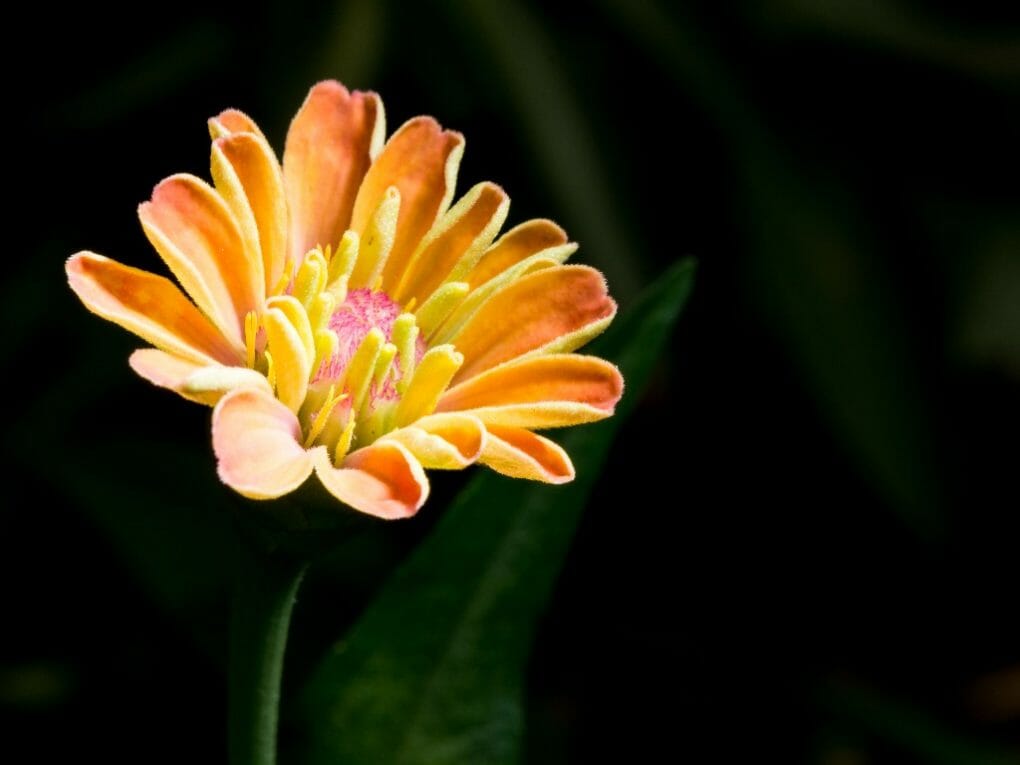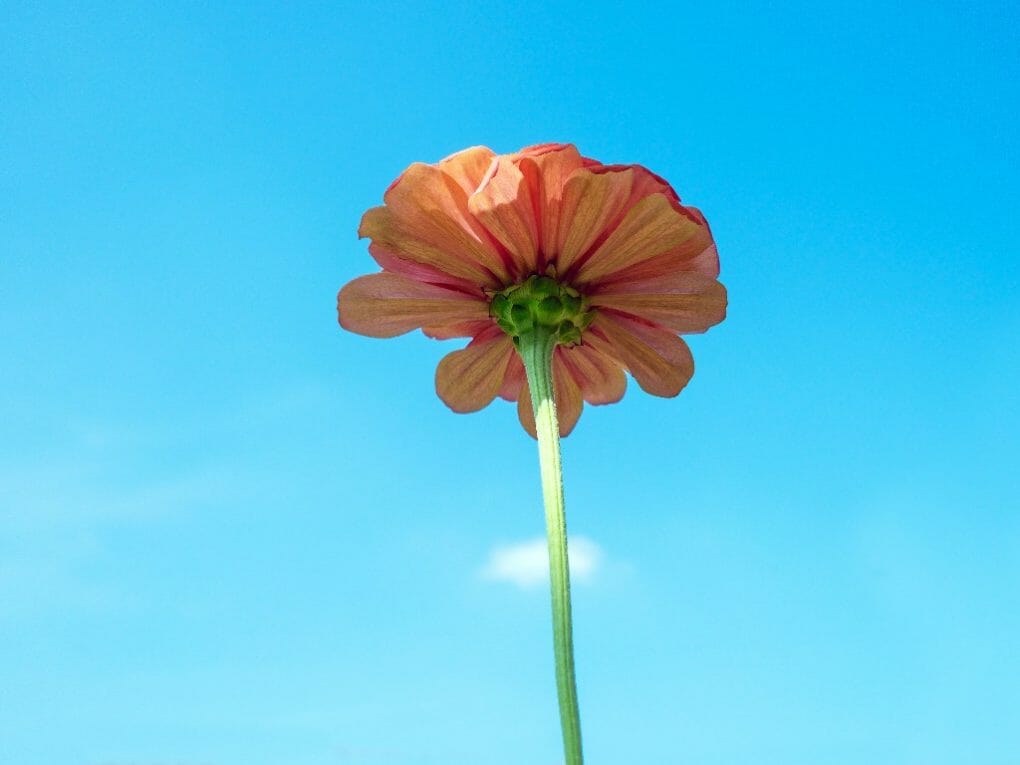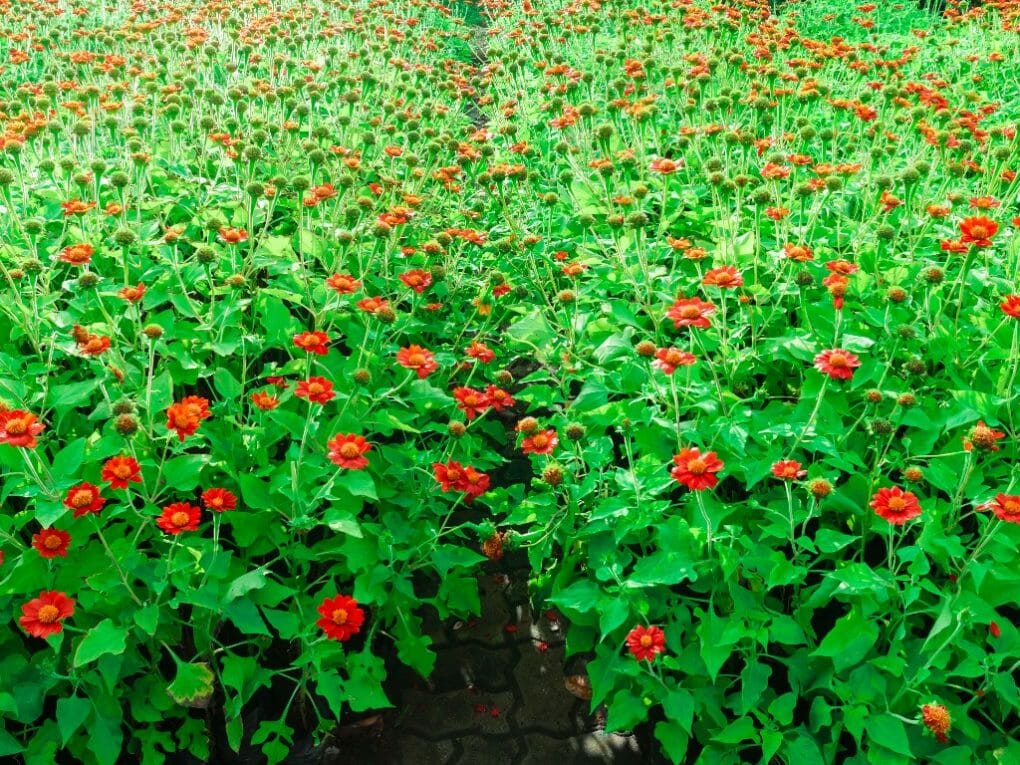Are Zinnias Easy to Grow? Beginner’s Guide to Zinnia’s Growing Requirements

Dr. Gladys Mbofung-Curtis, an expert on gardening at Garden Safe, says, “Zinnias are one of the easiest flowers to grow because the seeds only need basic garden preparation to sprout, and the plants bloom in just a few weeks. They can grow well with very little fertilizer and still produce flowers.” Zinnias are easy to grow, especially when the seeds are started indoors and then transplanted outside once the weather is warm enough. Ensure that you water zinnia plants well throughout the growing season, as dry soil will result in smaller and less colorful flowers.
There is a huge range of plant sizes available for zinnias. Some of them don’t get very big. Plants that reach a height of 1 foot and have a mounded form. The others are plants that can grow up to 3 feet tall and have large blossoms. Plant the appropriate kind for your needs, considering your available space. Flowers on mounding types are often smaller, and the resulting plants have a more aesthetic appearance. The taller kinds are the ones most commonly used for cutting, and for the maximum visual effect, they should be planted in rows or clusters.
Table of Contents
Growing Requirements
Sunlight

Zinnias have the best growth and flowering potential in direct sunlight. They can flower in partial shade, particularly in warmer climates that have shade in the afternoon. However, this makes them more susceptible to disease, resulting in fewer flowers overall.
Soil
Zinnias thrive in soils rich in organic content, have good drainage, and are productive. Because zinnia seedlings are susceptible to rot when grown in cool, moist soils, it is essential to have soil that drains well. Zinnias can thrive in almost any type of soil, but the best soil for them is one that is high in organic matter and has good drainage. The pH of the soil should ideally fall between 5.5 and 7.5. If the soil is improved by adding compost (humus), the flowering plants will develop faster. Get additional information about amending the soil and preparing the ground for planting.
Watering
Zinnias are most successful when grown in soil that is kept slightly damp. This is especially important to remember when caring for young plants. You should water a few times weekly to ensure that the top 6 to 8 inches of soil are moist. Zinnias are susceptible to rot diseases, particularly when grown in damp and clay-based soils, so make sure not to overwater them. Zinnias have a high tolerance for dry conditions after they have become established.
Fertilizing
Before you plant zinnias in the ground, amend the soil with compost. Applying a side dressing of organic fertilizer with a 5-5-5 ratio just as the flowers form may help you get larger and more abundant blooms.
Staking
These flowers do not require propping because their stems are strong enough to support themselves.
Spacing
Zinnia seeds should be spaced a few inches apart in either rows or clusters. When the plant has four leaves, you should thin it out to be 8-18 inches apart, depending on the kind.
Planting
Zinnias should be planted in the spring. After all, the risk of frost has gone, and about the same time that tomatoes should be planted. Zinnias are very simple to cultivate and can be seeded directly into the garden. For sooner flowering, sow seeds inside 4 to 6 weeks before your last frost date.
Mulching
After the zinnia plants have been established, apply a layer of straw or bark mulch 2 inches thick as mulch around them. This will assist in maintaining the moisture content of the soil and preventing the growth of weeds.
Trimming & Pruning
Regularly “deadheading” (trimming) spent blooms will encourage further flowering and keep the plant looking tidy. When the plant is young, pinch off the growth tip to encourage bushier plant development on tall kinds. This will cause more side branches to grow, the plant to shrink, and produce more blooms. However, this could cause a delay in blossoming, particularly in regions with a chilly summers.
Dividing & Transplanting
Since zinnias are annual flowers, they do not need to have their plants divided. However, they can be difficult to transfer due to their particular preferences. Use larger peat or plastic pots if you are growing them inside to transplant. This will prevent you from having to transfer them more than once. When moving the plants, you should be careful not to disrupt the roots.
Pests and Diseases

Zinnias are particularly susceptible to the illness known as powdery mildew, as well as Japanese beetles. In the late summer, the disease known as powdery mildew is particularly widespread in humid regions of the United States. On the leaf surfaces, a white coating may be seen developing. The leaves will eventually turn yellow and fall off the tree. The entire plant can become infected very rapidly, making it look untidy and reducing the number of flowers it produces. Powdery mildew can be avoided by increasing the distance between plants to improve air circulation, cultivating disease-resistant types, and beginning the application of preventative sprays early in the season. Neem oil and Serenade (Bacillus subtilis) are two organic sprays that are effective in preventing the spread of powdery mildew. Both of these sprays can be found at most garden supply stores. If you want to produce your organic spray, you need one gallon of water, one tablespoon of baking soda, and one tablespoon of horticultural oil. Zinnia leaves are susceptible to assault from aphids, which can cause the leaves to curl and turn yellow. Zinnia leaves can be rid of their infestation of aphids by subjecting them to a powerful stream of water from a hose.
Zinnias are a favorite food of Japanese beetles, and it is common to find them munching on plants and shredding the leaves. Beneficial nematodes or milky spore powder can be applied in the early summer and again in the fall to eradicate the white, c-shaped grubs that live in the soil and are responsible for the population of Japanese beetles. These are the immature stages of the adult beetles, known as larvae. In colder places, helpful nematodes should be used. To cut down on the number of adult beetles around the summer, place traps for Japanese beetles at a distance of at least 200 feet away from your garden around your property. The flying beetles will discover the traps in this way before they discover your plants and will be unable to damage them. Another option is to manually collect the adults in the morning, when they are most lethargic, and place them in a bucket of soapy water.
